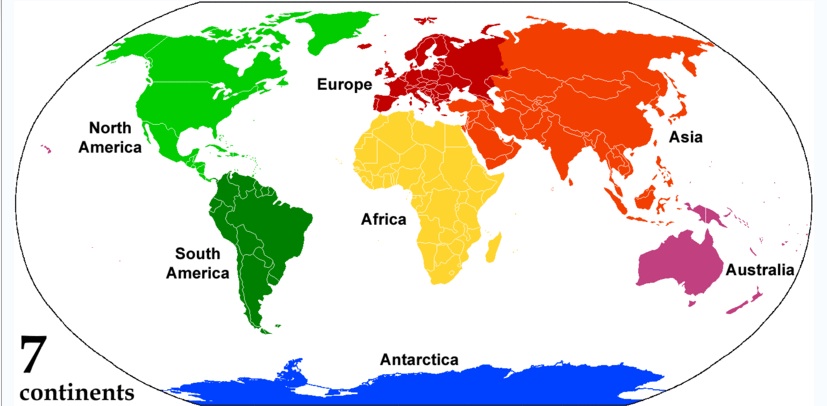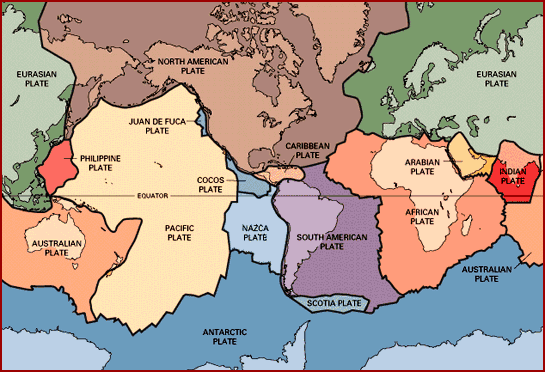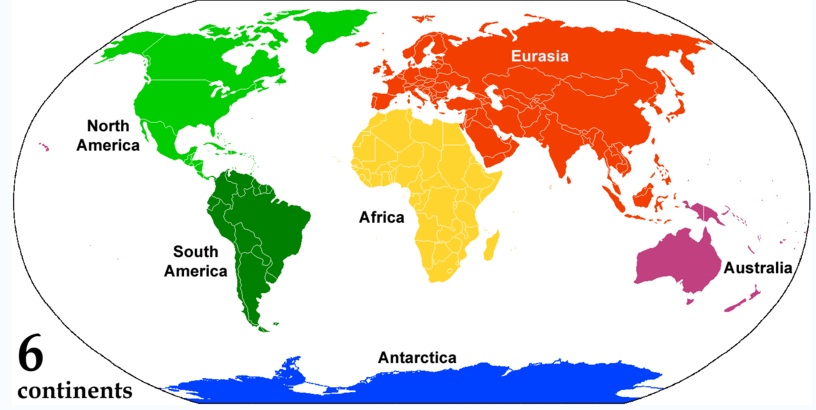The Continents
A continent is usually regarded as a large unbroken land mass completely surrounded by water, although some are not. There are several continent models, two of which are depicted in Figure 2.15 The seven continents model of North America, South America, Europe, Asia, Africa, Australia, and Antarctica are defined by physical and cultural conventions. Considered a separate continent in the seven continent model, Europe is a physical extension of Asia, together called the "Eurasian continent" in the six continent model. The Ural and the Caucasus mountains are used as the boundary between Europe and Asia. The island groups of the Pacific are grouped together as Oceania but are not parts of an actual continent.
 Figure 2.15a Seven Continent Model |
Figure 2.15b Six Continent Model |
Geologists view continents in a different way from geographers, a continent is defined as a portion of the fractured Earth's crust. Continental crust is composed primarily of granitic rock while oceanic crust is mostly basaltic rock. These fractured pieces are called "tectonic" or "lithospheric plates".

Figure 2.16 Earth's
Tectonic Plates
Courtesy USGS
